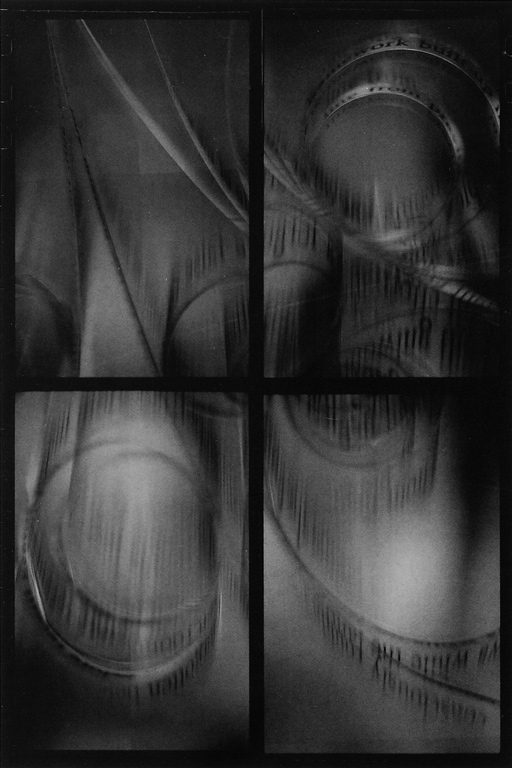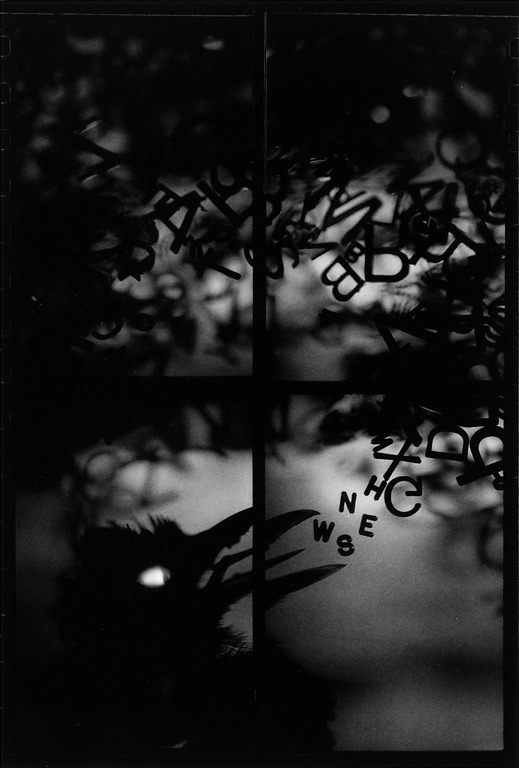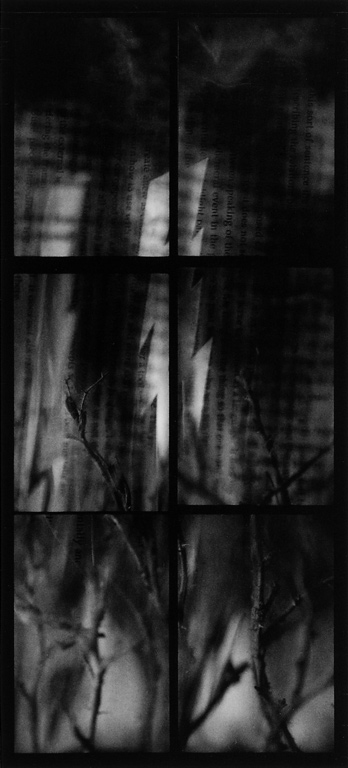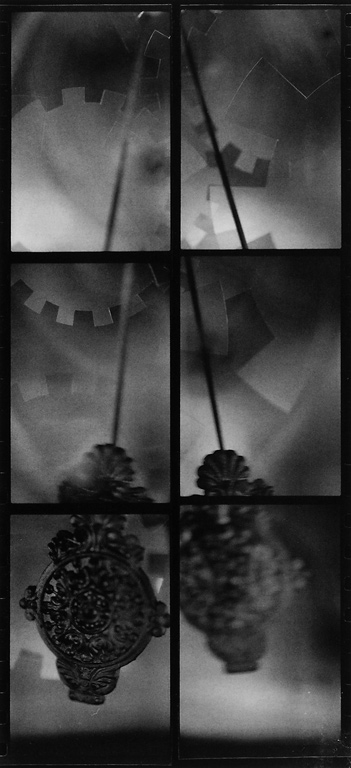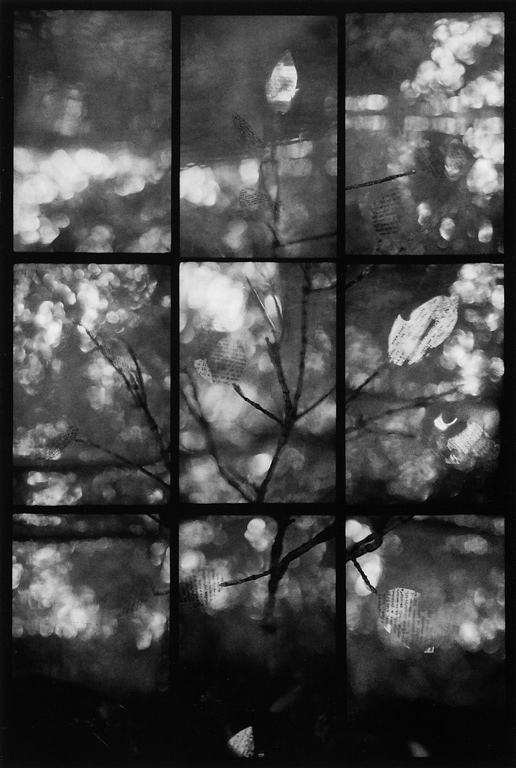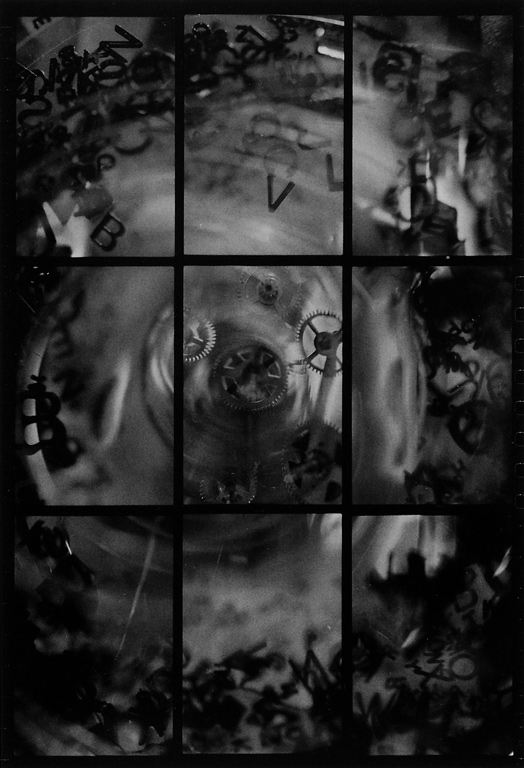[Fall 1995]
by Mona Hakim
Randy Koroluk’s photographs do not lend themselves to being viewed in a contemplative manner. Our eye ceaselessly wanders from plane to plane, finally being propelled in circumvolutions in many of the works.
In other cases, our gaze glides along the linear marks of the motifs that stream down from the top to the bottom of the image. This sensation of continual movement is reiterated in the grid structure that cuts the image into a multitude of segments, generating a series of abrupt planes. On the other hand, each of these segments, by framing a distinct part of the whole, attempts to produce one (the only) possible stopping place in the image.
Koroluk captures his subjects from small objects that he himself places in the picture plane. Assembled, caught by the camera, and reproduced on large-format photographic supports, the objects comprise a seething, streaked world. Of course, these works raise the issues of motion and temporality: a sense of fleeting time that sweeps us up in its whirlwind of icons and writings – a rain of icons and letters that must be grasped on the fly, so elusive are this artist’s images. In fact, the subjects seem to be covered by a foggy film that unfocuses the details, as if there were a veil over the eye’s retina or a filter on the camera lens. The grid-ding simulates an image visible through the framing of a window that makes a screen and obstructs the perspective of the subject presented.
Thus, the illusion of reality is blurred by the flattening out of depth. Only the figures clearly in the foreground force a certain form of realism upon us. Given a formal mechanism that induces combinations of shadow/light, precision/confusion, fixity/mobility, and a litany of grey scales, the eye must work hard to focus in order to see more clearly. And so the gaze, as it travels back and forth, digs into the image, opens up the depth of field, and is allowed to wander in the meanders of this nebulous plane – in a different reality, one that is more oniric or extracted from the unconscious.
Engaging the perceptive activity of the viewer to a high degree, Koroluk’s work proceeds from an obsessive manipulation of images involving montage, découpage, deconstruction, and reconstruction. We see in these images a taking charge of the very photographic act, photography as “a machine for shaping the real,” as Philippe Dubois would say. By fractioning its content through the grid effect, the artist reminds us that the gaze, like photography, is an affair of cutting up and framing reality. This way of doing things brings to mind the photographic work of a Bill Vazan, in that the succession of fixed shots leads to a diagramming of the world and a recording of the unfolding of time.
For Koroluk, each segment creates a salutary pause from the nervousness of the images. To this difficulty of perceiving objects clearly is added a fleeing of language – whether it is the aleatory placing of letters in Songbird or the words jammed together in the gears of Harvest, the fluidity of the writings in the form of leaves in New Tree or the pages that fly by with lightning speed in Storm – giving a convincing demonstration of how language resists articulation of the real. In this sense, the grid also makes a bridge between constructed and freely associated images, between the conscious and the unconscious.
Translated by Käthe Roth
Randy Koroluk, who lives in Saskatoon, is one of the rising stars of Western Canadian photography. His work is familiar to those who frequent the Workshop Gallery and Montreal’s Mendel Art Gallery.
Mona Hakim, a critic and essayist, specializes in contemporary art. She contributes to many contemporary-art publications in Canada. As well, she provides many exhibition reviews for our publication.

